Boba tea, a Taiwanese treat popularized in the 1980s, has captivated a global audience with its sweet, milky flavor and chewy tapioca pearls. Known commonly as boba, these tapioca pearls are enjoyed in various drinks and have become a staple in cafes and on social media.
As the trend of sharing culinary delights with pets grows, dog owners are now questioning whether it’s safe to share this chewy treat with their canine companions.
This blog post aims to explore the safety of boba for dogs, discussing both the potential benefits and risks involved.
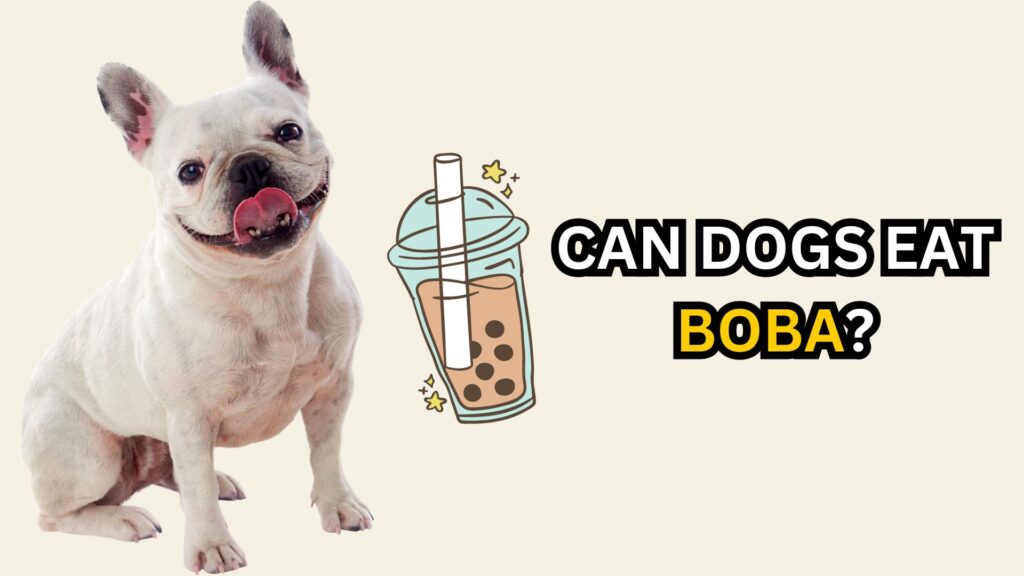
What is Boba?
Boba pearls, or tapioca pearls, originate from the cassava root, a starchy tuber that’s a dietary staple in many tropical countries. The pearls are made from tapioca starch, which is extracted from cassava and processed into the little chewy balls we know and love.
These pearls are typically cooked in a hot, sugary syrup to give them their sweet taste and springy texture, which is then added to tea or smoothies.
Nutritionally, boba doesn’t offer much beyond simple carbohydrates. A serving of boba can contain about 160 calories, with most of these coming from carbs and very little protein or fat. There’s also a significant amount of sugar, particularly if the pearls are pre-soaked in syrup.
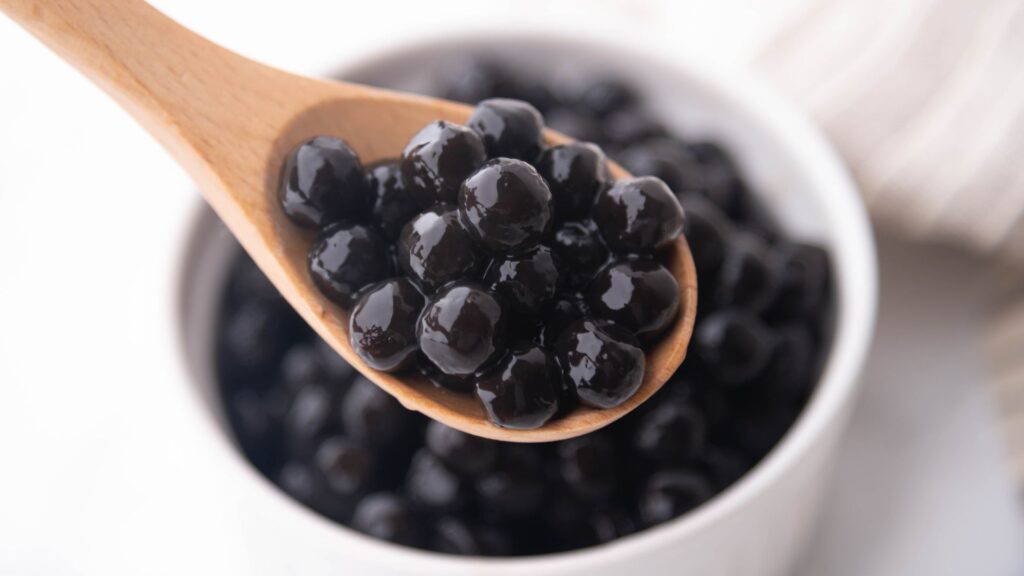
Can Dogs Eat Boba? Examining Safety and Health Impacts
When it comes to dogs, the primary concern with boba lies in its digestibility. Tapioca pearls are essentially devoid of any nutritional benefits for dogs.
While tapioca itself is not toxic to dogs and is often used in dog food as a grain alternative, the form and preparation used in boba tea are not suitable for canine consumption.
Potential Risks of Feeding Boba to Dogs
- Choking Hazards: The size and texture of boba pearls pose a significant choking risk, especially for smaller dogs. The chewy, sticky nature of the pearls can cause them to become lodged in a dog’s throat.
- Sugar Content and Health Effects: The high sugar content in boba can lead to various health issues in dogs, including obesity, diabetes, and dental problems. Dogs do not need sugar in their diet, and excessive sugar can lead to serious long-term health issues.
- Allergic Reactions and Gastrointestinal Upset: Some dogs might be allergic to tapioca, which can manifest as skin irritation or gastrointestinal distress, such as vomiting or diarrhea.
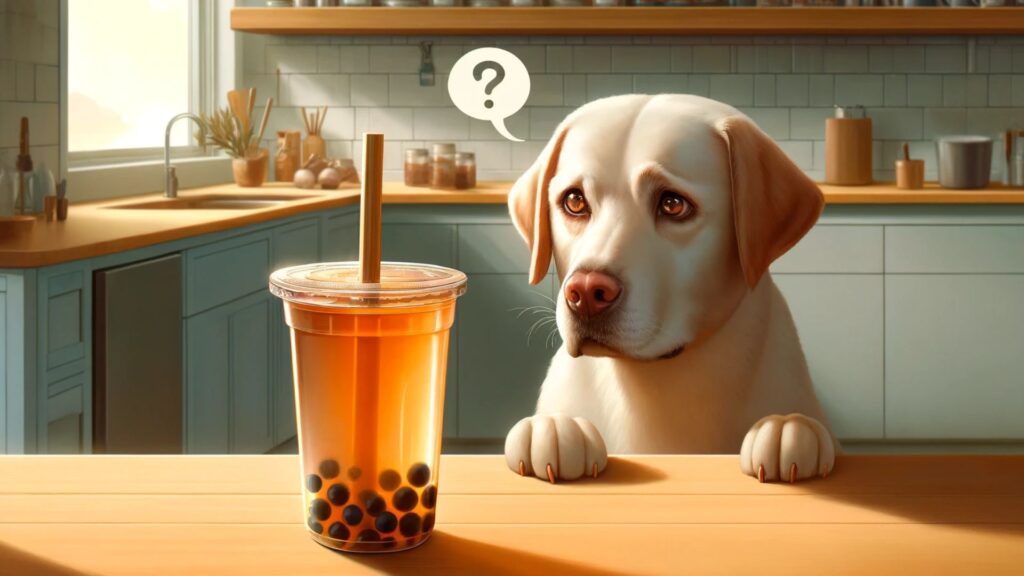
Veterinary Advice and Studies
While there are no specific studies on dogs consuming boba, veterinarians generally advise against feeding pets foods that contain high amounts of sugar and artificial ingredients.
The consensus is that offering your dog a treat that is high in sugar and offers no nutritional benefit is not advisable.
While tapioca itself isn’t harmful to dogs, the boba found in drinks is not recommended for canine consumption due to its sugar content, potential choking hazard, and lack of nutritional value. Dog owners should consider safer, more nutritious treat options for their pets.
Pros and Cons of Feeding Boba to Dogs
Pros:
- Possible Enjoyment: Dogs typically enjoy new tastes and textures, and a non-sweetened, plain tapioca pearl might be an interesting treat for them. If given in moderation and without sugary syrups, it could serve as a rare snack.
Cons:
- Nutritional Shortcomings and Health Risks: Tapioca pearls offer no nutritional benefits to dogs. They are high in calories and carbs which can contribute to weight gain without providing any essential nutrients.
- Risk of Dental Problems: Sugary boba can lead to dental issues such as tooth decay and gum disease in dogs. Even sugar-free tapioca pearls can stick to teeth and promote plaque buildup.
- Long-term Health Implications: Regular consumption of non-nutritional snacks like boba can lead to long-term health issues such as obesity, diabetes, and other metabolic disorders in dogs.
Safer Alternatives to Boba for Dogs
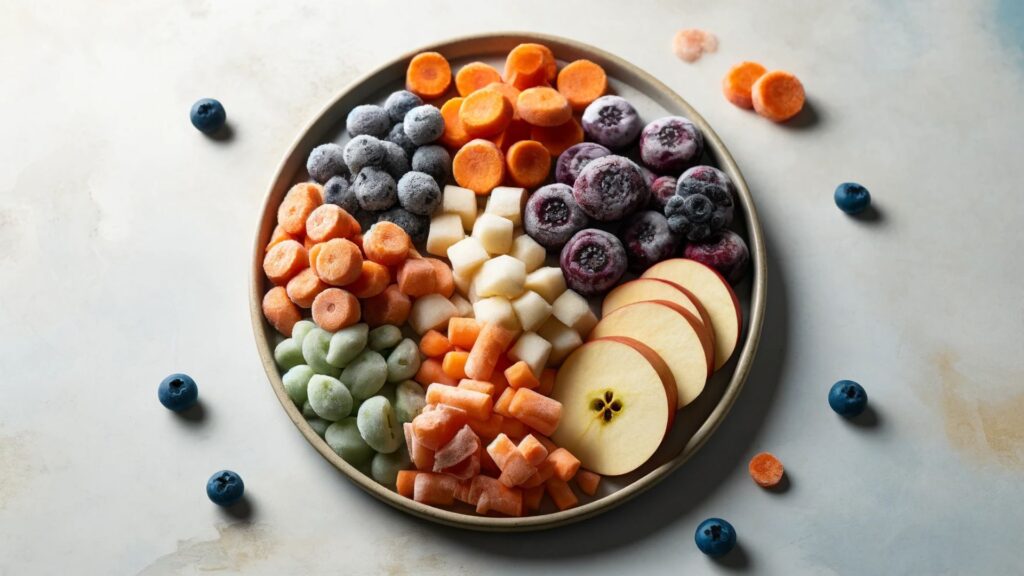
Dog-Safe Treat Suggestions:
- Frozen Fruits and Vegetables: Small pieces of frozen carrots, apples (without seeds), or blueberries can offer a refreshing, low-calorie treat. Make sure all fruits and vegetables are safe for canine consumption.
- Specialty Dog Treats: Many pet stores offer dog treats that mimic human snacks but are formulated to be safe and nutritious for dogs.
- Rice Balls: For dogs that enjoy the texture of tapioca pearls, small plain cooked rice balls can be a safer alternative, as they are softer and less likely to cause choking.
Tips for Making Homemade, Dog-Friendly Versions of Popular Snacks:
- Homemade Doggy Ice Cream: Mix plain yogurt with peanut butter and mashed bananas, then freeze in small ice cube trays for a delicious homemade treat.
- Vegetable Chips: Thinly slice sweet potatoes or carrots, lightly coat them in a dog-safe oil, and bake at a low temperature until crispy. This provides a crunchy snack without the additives of commercial products.
- DIY Dog Biscuits: Combine whole wheat flour, oats, and unsweetened applesauce to create simple, healthy dog biscuits. Add in ingredients like parsley for fresh breath or cooked pumpkin for digestive health.
Offering these healthier alternatives not only satisfies your dog’s taste buds but also contributes to their overall health and well-being, avoiding the risks associated with inappropriate human foods like boba.
By choosing or creating treats that are tailored to canine nutritional needs, pet owners can ensure that snack time is both enjoyable and beneficial.
Conclusion
In conclusion, while boba itself is not inherently toxic to dogs, it is not advisable to include it in their diet. The high sugar content, potential choking hazards, and overall lack of nutritional benefits pose unnecessary risks to canine health. As pet owners, it is crucial to focus on providing treats that contribute positively to our pets’ dietary needs.
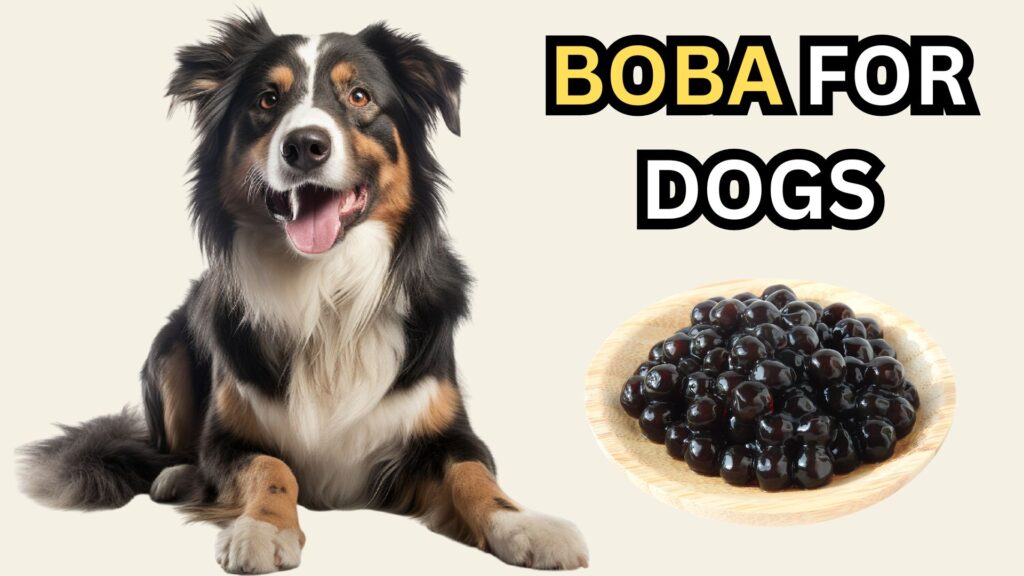
FAQs
What are the signs of an allergic reaction to boba in dogs?
Signs of an allergic reaction in dogs can include itching, redness of the skin, hives, swelling of the face or extremities, gastrointestinal upset like vomiting or diarrhea, and in severe cases, difficulty breathing. If you notice any of these symptoms after your dog consumes boba, it is important to consult a veterinarian immediately.
How much boba is too much for a dog if I choose to feed it as a treat?
Ideally, boba should not be fed to dogs at all due to its high sugar content and lack of nutritional value. However, if you do choose to give your dog a taste, it should not exceed a few pearls to avoid any health risks, and it should be an extremely rare occurrence.
Are there any boba ingredients that are specifically harmful to dogs?
Beyond the tapioca pearls, boba tea often contains ingredients like chocolate, caffeine, and xylitol (a sugar substitute), all of which are toxic to dogs. Always check the ingredients list thoroughly before allowing your dog to have any amount of boba.
Can dogs eat any parts of the boba tea other than the tapioca pearls?
Many components of boba tea, such as tea and added flavorings, may contain caffeine, which is harmful to dogs. It’s best to avoid allowing dogs to consume any part of boba tea.
What should I do if my dog accidentally eats boba?
Monitor your dog closely for any signs of distress. If the amount was small and contained no toxic ingredients, your dog might simply experience mild stomach upset. However, if symptoms like choking, vomiting, diarrhea, or lethargy occur, contact your veterinarian immediately.



0 Comments